Steadily growing platforms such as Facebook (2.18 billion active monthly users), Twitter (336 million), YouTube (1.9 billion), LinkedIn (294 million), Instagram (1 billion), Pinterest (200 million), and Snapchat (255 million) have ensured that brands use social media as channels for establishing and growing their online presence.
But is social media living up to its promise of helping marketers reach potential customers and delivering business results?
The social media users of today have gotten savvier. They know that brands are producing promotional content: 86% of the people are confident in their ability to identify content as con-tent marketing (Clutch).
Meanwhile, as a marketer, you're sweating blood to create tons of social media content and investing in paid ad campaigns to help your content gain more visibility.
Is all of that converting into real business results?
Significant percentages of social media marketers find it difficult to measure ROI to deter-mine what content to post:

Source: Sprout Social
Moreover, most brands suffer from poor engagement rates, fake or nonperforming followers, and lack of user interest in branded content. Facebook usage among young Americans de-clined 15% in 2018 (The Infinite Dial 2018):
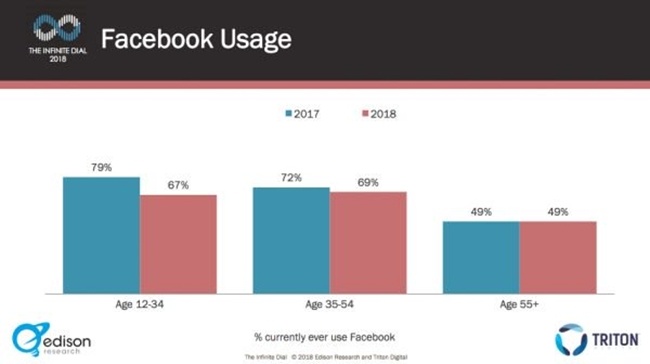
Another major challenge faced by marketers is ad fraud. You could be running a paid ad campaign you think is successful, only to realize that much of the new page likes or engage-ment you've gotten isn't real. Some $19 billion in ad revenue was expected to be lost in 2018 as a consequence of fraudulent activity (Juniper Research).
Building a real brand on social media is a bigger challenge than ever before. Understanding where you now stand is the first step toward taking the right direction.
How to Measure the Your Social Brand Strength
You can measure your social media presence and its effectiveness by tracking some key com-ponents:
- Awareness: The number of people who know about your brand on social media
- Reach: The impressions that your content/mentions receive on social channels
- Engagement: The total number of social interactions (likes, comments, and shares)
- Association: How your audience feels about your brand (sentiments such as positive, negative, and neutral, along with specific emotional associations, such as quirky or formal or bold, etc.)
Let's now look at key metrics for measure your brand strength, based on that list.
Website Traffic
The most common way to measure brand awareness is to track website traffic from social channels.
You can check your social traffic via your Google Analytics account to learn the number of daily/weekly/monthly visitors from social channels. A higher percentage of new visitors would be an indication of improving brand awareness.

Source: Buffer
The second metric that you can track in your Google Analytics account is direct traffic. Any-body who's typing your brand name to land on your website contributes to your direct traffic. It's an indication of brand awareness, since it consists of those users who know about your business likely through one or more of your marketing activities.
Brand Mentions
A crucial metric that tells you about your brand awareness and reach is social brand mentions. You can check your mentions using a tool like Brand24 (Disclo-sure: I work for Brand24). I used the tool to find out global mentions, reach, sentiment, and engagement regarding popular coffee chain Starbucks. Here are the results:
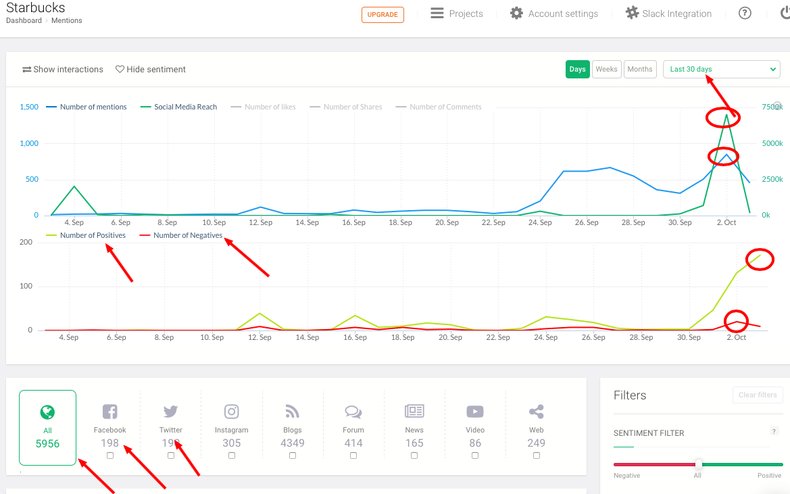
Starbucks received a total of 5,956 global mentions (Sept-Oct 2018) on all online channels, out of which 198 came from Facebook, 190 from Twitter, and 305 from Instagram.
Reach of Mentions
The reach of brand mentions shows the influence and following of those who have talked about your brand. The screenshot above shows that Starbucks got a total of 18 million plus monthly impressions.
Sentiment
The next important metric that you should track is the sentiment. Starbucks consistently got more positive brand mentions than negative ones. The brand received a total of 670 positive and 108 negative brand mentions the period in question.

Social Engagement
Social engagement tracks the total number of social likes, comments, and shares. The report shows that Starbucks received a total of 380K likes, 22.1K comments, and 76.8K shares across social channels.
Let's now compare each of those numbers to a competitor, Costa Coffee:
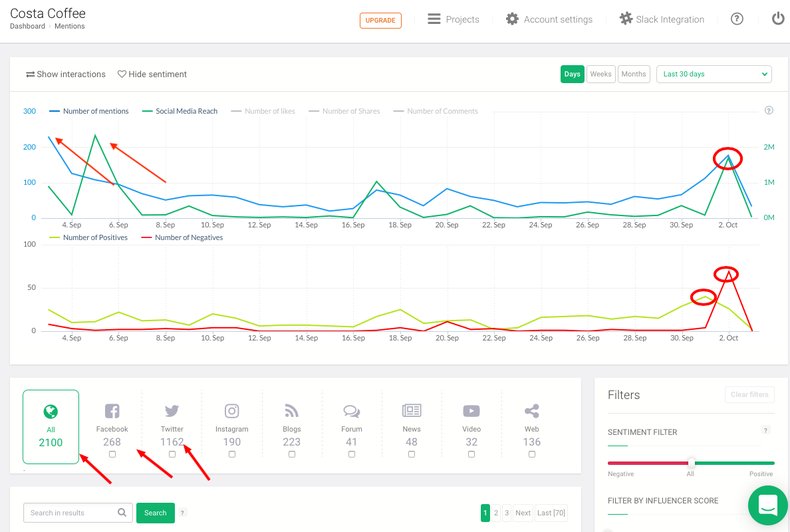
I have summarized the combined results in the following tables:
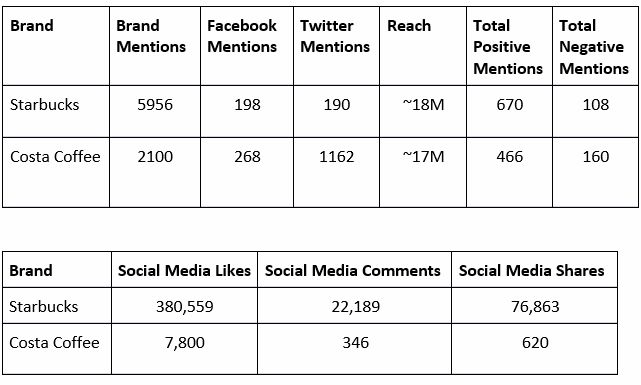
The above numbers show that Starbucks is ahead of its competition on most of the metrics except the number of mentions on specific social channels like Facebook and Twitter; Costa Coffee got a higher number of mentions on these channels.

Brand Association (Use Online Surveys)
A good way to gauge brand associations is to conduct online surveys. You can create a set of online survey questions like the following:
- What brand comes to your mind first when thinking of product X?
- What are some of the words that come to your mind when you're thinking of brand X?
- What are some of the traits you look for while choosing product X?
- Have you interacted with brand X on social media?
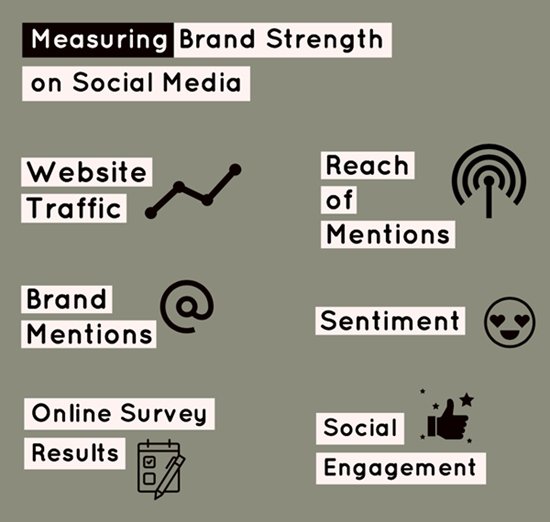
This way, you can track your social brand strength, periodically, for specific regions and also compare the numbers to some of your closest competitors. A detailed analysis will help you to know where you stand vis-a-vis your competition.
The study will also help you to find the reasons behind any negative sentiment and ways to prevent it.
What to Do Next
Once you know how your brand is doing, you can work on a strategy to improve your brand presence on social media and the quality of mentions.
Red Bull, the energy drink brand, has made a mark on social media by connecting with the youth. The brand has consistently worked as a media company to publish the best of extreme sports and adventure content. It also organizes and covers adventure sports events. Its strate-gy has ensured that anybody who loves adventure/extreme sports is likely a Red Bull fan.
Consider this video post from Red Bull's Facebook page. The video has 133K views, 900+ likes, and 130+ shares.
Here are some lessons from Red Bull's social media success:
- Understand popular culture and social issues.
- Become the voice of your audience.
- Reply promptly and be enthusiastic about your social media interactions.
What could brands do to get big on social media? They need to first be aware that audiences know when they're selling. Beyond that, studies reveal, consumers are looking to learn from and be entertained by branded social media content:
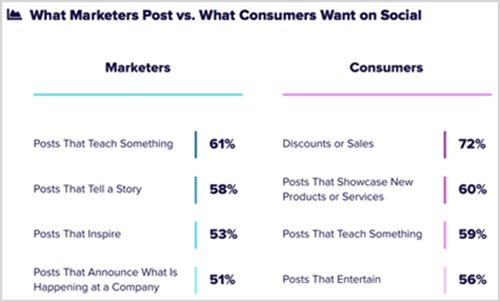
Source: Sprout Social
Accordingly, you need to be as authentic as possible at educating and entertaining your audi-ence. One option as a brand marketer is to partner with authentic social celebrities and/or sponsor their content as a way of reaching their loyal fans.
Over to You
Social media still provides a huge opportunity for brands to get extend their reach. Your suc-cess will depend on how well you differentiate yourself amid the clutter.
Running a host of campaigns that sound exciting is relatively simple. The hard part: to know whom you're talking to, and to acquire staunch followers and brand evangelists. To do that, you need to touch on real issues, understand cultural nuances, and cheer your audience to get anywhere close to becoming a big brand on social media.




